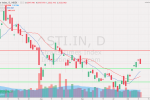
It would be an understatement to say that STI is lagging behind its bigger brother indices around the world. As of today, 23 June 2020, the US’s S&P 500 has returned to 3100 levels and China’s SSE has also been climbing steadily to 2950 levels. This is happening concurrently with the supposed scares from a potential second wave of infections caused by the COVID-19 pandemic. This begs the question of why STI is so far behind from other major indices and should our sluggish market really be justified by COVID-19 scares. In this post, we will be looking at key indicators that suggest that funds will still come back to Singapore companies.
Average dividend yield of index components
Compared to DJI 30 component’s average dividend yield of 2.99% and China’s SSE 50 component’s average of 3.06%, STI 30 components certainly have room to grow as the current average dividend yield is at 5.4%. This reflects the current situation around the world as capital and cheap money are desperately seeking growth potential rather than dividends. As a mature market with companies diversified in several countries, we can be sure that our potential for growth has not been fully realized. As to why STI is lagging behind, it is still a big mystery because there is no lack of funds in the market and the government has also supported the economy significantly with both monetary and fiscal stimulus. Check out the latest STI market outlook as well for more details.
SG Yield Hunters are running out of options
Singapore’s middle class is filled with savvy savers who are constantly looking out for higher interest rates for their deposits. On that front, Singapore is in fact lagging behind in terms of investment and financial literacy. Therefore, many people are still clinging on to high-interest saving accounts and considerably low yield investment instruments like fixed deposits, saving plans, and Government-Linked bonds. However, more entry-level and risk-averse options are available for such as Robo-invest platforms, regular saving plans (DCA), and ETF investing. While these options are less risky and do not require monitoring, yields are generally lower than buying shares itself. Hence in the future, financial literacy will eventually catch up and more people will be investing in STI components for higher yields and returns over time. This would result in higher share prices.
New 4G government amidst heighten global competition
Singapore has been well-known for being a prudent spending country with a AAA credit rating. This means that it still has lots of room for government borrowing and even money printing. As with the shift from 3G to 4G government, there might also be a change in the style of governance for financial services and regulation. This will increase the attractiveness of the financial sector of Singapore and bring in more funds to boost STI in the coming years. What has been done at the moment which is likely different from the past is the massive use of reserves in a strategic manner (in 4 separate tranches) to guarantee loans, support businesses, and boost investor’s confidence. As such, we will be able to expect continued support from the government to ensure stronger GDP growth in the country. These impacts will be reflected in STI as more companies will be incentivized to expand to support the economy and workforce in return.
Closing Thoughts
In conclusion, STI is really showing some potential but no glow at the moment. From the recent budgets announced, we can already see a shift in the government’s willingness to ensure that Singapore’s economy remains vibrant and competitive. That would mean more borrowing in the near future to fuel expansion plans for companies to stay relevant and attractive to investors worldwide. As for local investors, it will still take some time before citizens hop on the bandwagon of stock investments otherwise more of their capital in ETFs and Robo-investment platforms will likely flow to the US instead. However, judging by the limit of how much other economies outside of Singapore can grow, we will be able to expect yield hunters to find interest in Singapore’s economy which still presents higher yields along with a stable economy.






